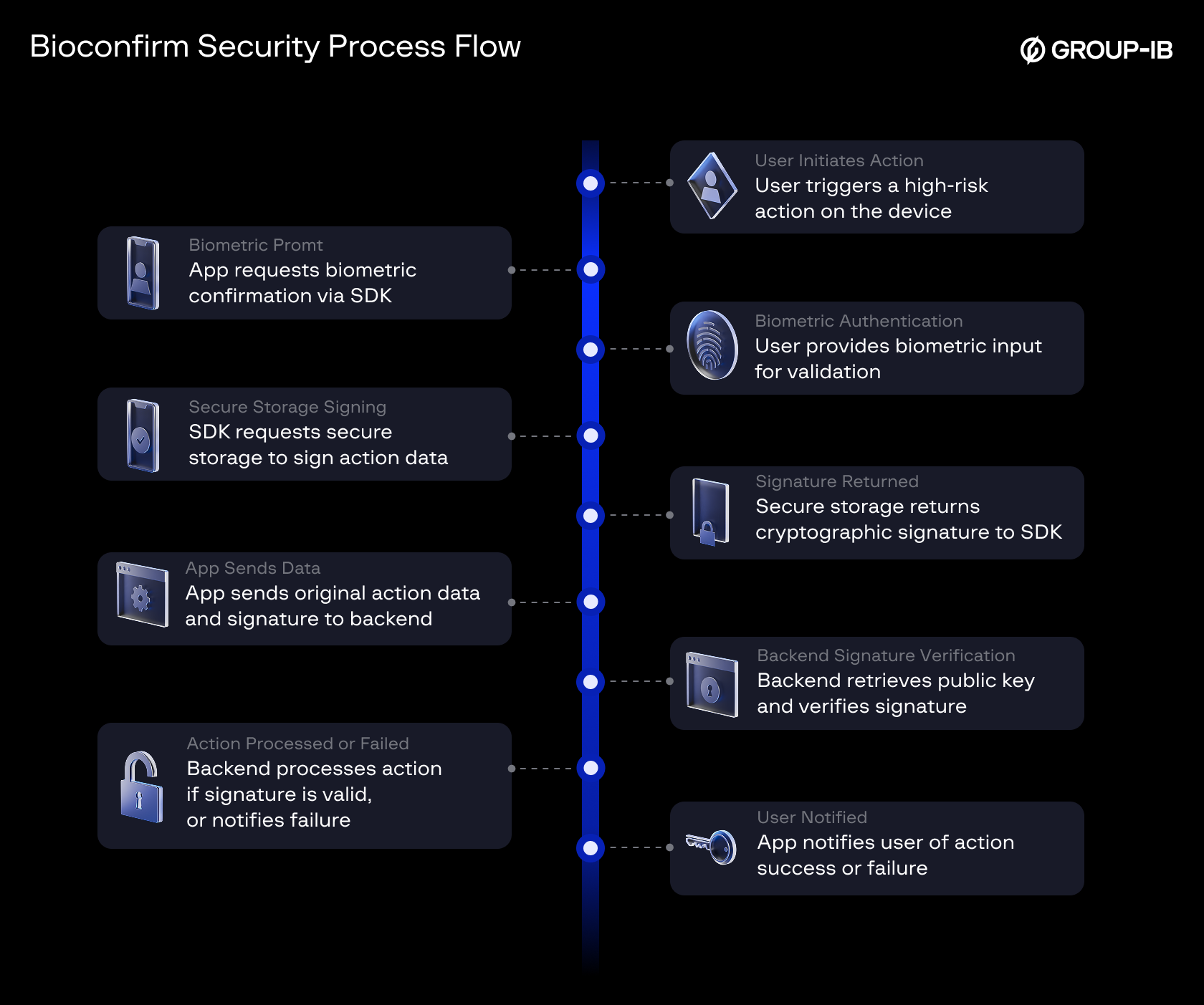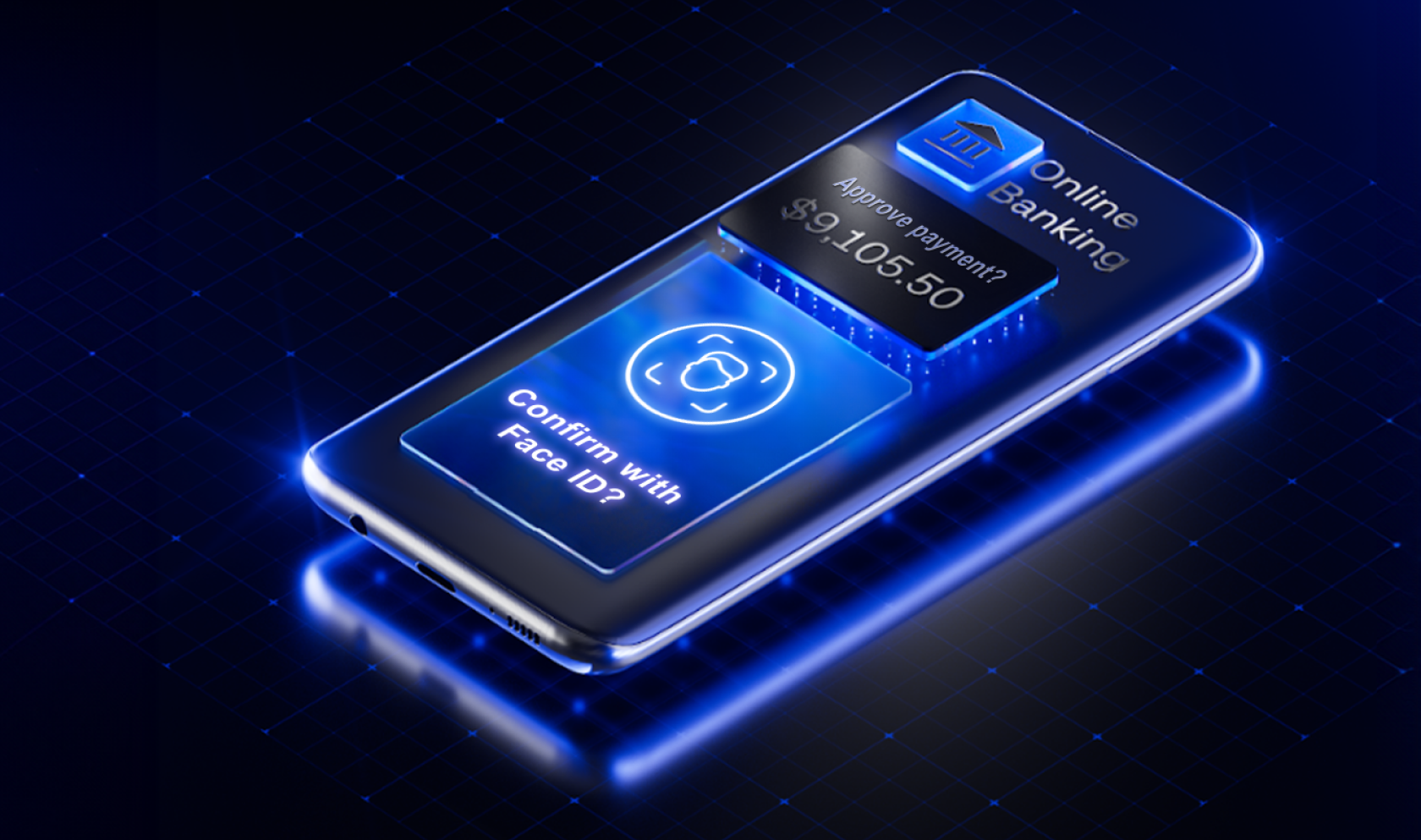Introduction
If a customer logs into their bank account and initiates a high-stakes transaction, nothing about that seems plausibly suspicious. “Yes, they logged in using their set password or through MFA.” If that’s a general notion, it’s worth asking: Is that form of authentication enough?
Banks handle high-value transactions daily, and as their operations grow, so do the risks they face — Account Takeover Attacks (ATO), scams, fraud schemes, and more. As digital risks become increasingly sophisticated, users demand tighter banking security while also seeking fewer transaction authentication measures to consume services seamlessly.
Stricter security cannot equate to multiple clicks or intrusive profiling. However, refraining from it might mean becoming prime targets for account takeover, where threat actors exploit weak points through credential stuffing, SIM swapping, phishing, and device spoofing.
The need to move from passive risk-based authentication to smarter, real-time transaction authentication is pressing. Group-IB aims to solve this critical challenge for banks and other industries through BioConfirm – a new feature in Group-IB’s Fraud Protection solution, designed to provide an essential layer of banking security for high-risk transactions or user details changes.
The Banking Security Challenge
Financial service providers and their customers have consistently been on the radar of cybercriminals, who employ every trick at their disposal to manipulate users, accounts, and identities for financial gain.
Various techniques – from credential stuffing that leverages compromised passwords to sophisticated social engineering schemes (deepfakes) aimed at deceiving customers into revealing sensitive information or approving fraudulent payments – are becoming increasingly complex for traditional security systems to detect or mitigate in a timely manner.
Yet for security leaders, adopting new solutions is more than detection; it’s also about fit, ROI, and operational cohesiveness. Addressing the dilemma, Group-IB introduces an additional layer of baking security with BioConfirm. This robust, device-bound verification solution adds an essential layer of protection without creating user friction or being bypassed by persistent attackers.

Flow of authenticating a high-risk user action using biometric verification and cryptographic tokens
Identity Confirmed, Transaction Initiated
System integrity and end-to-end security are of the utmost importance in transaction ecosystems. With malicious users forging information and credentials to perform illicit money transfers, relying on common transaction authentication in banking is a weak strategy if they want to stay secure in today’s high-risk environment.
With BioConfirm, they add a biometric, real-time consent to ensure that even legitimate-looking actions are verified with certainty.
BioConfirm in Action: Critical Use Cases for Banks
BioConfirm is engineered to protect sensitive operations by requiring explicit user consent through their device’s native biometrics (Face or Fingerprint unlock). This provides strong, unforgeable verification at crucial moments.
- Authorizing High-Risk Transactions: When customers initiate large fund transfers, especially to new beneficiaries or for international payments, an additional layer of security with BioConfirm ensures the legitimate account holder approves the transaction.
- Securing Changes to Sensitive Account Information: When a user attempts to update critical details like their registered phone number, email address, password, or shipping address—all common targets during account takeover attempts—BioConfirm can verify that it’s the genuine customer making the change.
- Approving New Payee/Beneficiary Setups: Fraudsters often need to add their own accounts as new payees before they can make money laundering attempts. That is where BioConfirm, as a preliminary step, validates the user with biometric authentication in banking upon indication of risky activity.
- Step-Up Authentication for Suspicious or Risky Logins: If a login attempt occurs from an unrecognized device or a new geographical location, BioConfirm can serve as an intelligent step-up challenge, ensuring it’s the legitimate user.
- Confirming Access to Sensitive Financial Data: BioConfirm can provide an additional security checkpoint for downloading extensive transaction histories or accessing investment portfolios.
- Enhancing Security for Card-Not-Present (CNP) Transactions: BioConfirm can provide a secure approval mechanism directly from the user’s trusted device for authorizing e-commerce or other CNP transactions.
The BioConfirm Advantage for Banks and Their Customers
Integrating BioConfirm into your banking application offers concrete benefits:
- Unforgeable Verification Drastically Reduces Fraud: Biometrics based on a user’s physical device directly combats Account Takeover (ATO) and unauthorized transactions by verifying the user’s presence and intent through biometrics tied to their specific device.
- Enhanced Customer Trust & Confidence: Visible, easy-to-use biometric security reassures customers that their finances are protected by cutting-edge technology.
- Improved User Experience: Potentially cumbersome OTPs or additional passwords for high-risk actions are replaced with a quick and familiar biometric tap, ensuring a smoother customer journey.
- Strengthened Security Posture: It adds a powerful, device-bound authentication factor inherently resistant to remote attacks like phishing and credential stuffing.
- Potential Operational Cost Reduction: By preventing fraud incidents, banks can save on associated investigation costs, customer reimbursement, and the operational overhead of managing compromised accounts.
Real-World Scenario: With BioConfirm As An Essential Layer of User Authentication
Scenario: Vin has a $25,000 balance in her digital banking app. A fraudster illicitly obtains credentials from a data breach and logs in through a desktop browser.
The Attack: The fraudster attempts to transfer $23,500 to a newly added recipient.
BioConfirm in Action: The transaction isn’t approved; instead, a unique, one-time cryptographic token is generated and sent only to the registered user’s device, so Vin receives a notification saying “Confirm Transfer of $23,500 to New Recipient?”
The fraudster is stuck — they can’t access the users’ devices or provide biometric proof.
Outcome: The transfer is blocked in real-time. A $23,500 fraudulent transaction is prevented, and customers’ trust and resources remain intact, without any friction.
BioConfirm: Still “Optional” Or An “Immediate Necessity” for Your Business?
Integrating a solution such as BioConfirm to authenticate high-value transactions shouldn’t be stalled by “we’ll consider it” sentiment; it is an immediate need – we don’t claim it, the three converging trends do – changing threat environment, evolving customer demands, and increasing regulatory requirements.
- For context, a recap on the threat landscape:
- SMS OTP is a Known, Exploited Vulnerability:
The “uniquely generated for your registered device” passcodes have long been a standard for authenticating transactions, but they’re now often exploited. Sophisticated SIM swap attacks, social engineering schemes, and other well-documented attack vectors have made them an untrustworthy security protocol. - Fraud is Now Industrialized:
The threat of what were once “manually carried out” credential stuffing attacks is now automated and constant. “Fraud-as-a-Service” platforms on the dark web allow even low-skilled criminals to launch sophisticated campaigns—banks are now dealing with fraud at a scale that simply didn’t exist a few years ago. - AI for Attackers:
AI has removed the insufficiencies and obvious giveaways that cybercriminals used to struggle with when crafting phishing emails and social engineering scripts. The risk of being baited isn’t limited to technical exploits anymore—it’s about psychological manipulation that drives users into performing unintended actions.
- SMS OTP is a Known, Exploited Vulnerability:
Legacy systems, traditional countermeasures aren’t built to handle such new-age risks. Moreover, your customers’ needs are evolving too — the need for secure banking is unquestioned – just add more convenience, but not more steps.
2. Security is now a core part of the user experience, and customers have zero patience for friction.
Biometrics are already woven into their everyday lives—fingerprints and face scans have made security feel effortless. And now, with less effort, fewer actions, and the same (or even greater) level of trust, offering anything less convenient puts you at a disadvantage. We’re already seeing a rise in transaction abandonment, process frustration, and even customers moving towards other banking alternatives.
The “more security, less friction” demand seems like an impasse that can easily be overcome with BioConfirm – a feature that demonstrates your commitment to protecting customers’ funds, which directly builds brand loyalty and trust.
As modern smartphones possess processing power that allows for near-instantaneous security verification, the actual technical check is often completed faster than humans can perceive. This speed is what makes for a truly seamless customer experience.
BioConfirm Frictionless Security Check offers the exact experience, providing security without an added “step.” The system decouples the instantaneous verification from the visual confirmation shown to the customer (the “verifying…” screen we’re all used to seeing). This means businesses can decide the exact duration of the visual cue.
3. Regulatory and Competitive Pressure
* Regulatory Patience Is Weakening: Regulations like PSD2 and its Strong Customer Authentication (SCA) requirements have set a global precedent. Regulators now expect financial institutions to move beyond static, easily compromised authentication methods and adopt dynamic, risk-based security. Continuing to rely on outdated OTP methods—when advanced authentication technology is available—is fast becoming a significant compliance risk.
* Security seen as a Differentiator:
In today’s crowded digital banking landscape, the institution that delivers the most secure and frictionless experience will be the one that earns user trust—and market share.
* The Mobile App Is the Bank: Banking is rapidly shifting from web to mobile. Your app is no longer just a touchpoint—it is your brand, your service, and your first line of defense. Securing it with outdated, web-first models simply doesn’t cut it anymore.
Seamless Integration, Forward-Looking Security
BioConfirm is designed to complement your existing multi-layered security strategy. As a part of our Fraud Protection SDK, we provide a robust solution for a significant segment of mobile banking users.
Partner with us to Secure the Future of Banking
The tumultuous financial landscape demands constant innovation in security. BioConfirm offers a powerful, user-centric way to protect your institution and customers from the ever-evolving threat landscape.
Contact us today
To learn how BioConfirm can be integrated into your banking platform to safeguard your most critical operations.
BioConfirm FAQs for Banking and Financial Services Providers
Can BioConfirm replace or strengthen your current MFA setup (like OTPs or tokens)?
BioConfirm for Banks significantly strengthens your existing Multi-Factor Authentication (MFA) setup for high-risk transaction banking scenarios. It combines a strong inherence factor (biometric authentication such as fingerprint or facial recognition) with a possession factor (the user’s cryptographically bound mobile device). This makes it a more secure and user-friendly alternative to traditional methods like SMS OTPs or tokens. Rather than completely replacing existing components, BioConfirm enhances them, delivering secure online banking and transaction authentication for sensitive operations without disrupting customer authentication workflows for everyday tasks.
Will this help us reduce account takeover attacks through tactics like credential stuffing and SIM swapping?
Yes, BioConfirm provides strong protection against common financial fraud tactics:
- Credential Stuffing: Even with stolen credentials, attackers cannot bypass BioConfirm because account takeover prevention is enforced through biometric confirmation on the user’s uniquely bound device.
- SIM Swapping: BioConfirm doesn’t rely on SMS OTPs, eliminating a major vulnerability in mobile banking security. It authenticates transactions through a biometric authentication banking layer on the physical device, making SIM-based fraud ineffective.
Can we integrate BioConfirm into our risk engine or fraud detection logic?
Yes. BioConfirm can feed transaction authentication signals and challenge outcomes (success or failure) into your fraud detection logic and digital identity verification systems. These signals enhance your banking security risk engines with real-time, device-bound authentication insights, improving your ability to detect anomalous behavior or fraudulent activity.
How does this support compliance with PSD2 (SCA), RBI, or other digital transaction laws?
BioConfirm supports PSD2 SCA solutions by providing two strong factors:
- Inherence: biometric traits (e.g., Face ID or fingerprint)
- Possession: the cryptographically bound mobile device
This aligns with Strong Customer Authentication (SCA) requirements and assists with digital identity verification banking protocols. For markets like India, BioConfirm also supports key RBI digital transaction compliance principles by enabling explicit, user-controlled approvals for high-risk transactions.
How does the initial device binding process work and ensure security?
During initial onboarding, BioConfirm creates a secure cryptographic link between the user’s identity and their mobile device. The device binding process involves generating key pairs locally on the device. The user authorizes this process via biometric authentication, ensuring that the private key remains safely stored in hardware-backed secure storage (such as the Secure Enclave or TEE). This process is vital in digital banking security and customer authentication banking workflows.
What is the procedure if a customer loses their registered device or gets a new one?
Banks must implement a secure deregistration and re-registration process for lost or replaced devices. This typically includes strong digital identity verification steps. Once verified, a new device can be bound via BioConfirm, ensuring uninterrupted, secure mobile banking while protecting against unauthorized access.
How does BioConfirm protect against malware or remote attacks on the user's device?
BioConfirm leverages device-bound cryptographic keys that are stored in the device’s secure hardware (e.g., Secure Enclave on iOS, Trusted Execution Environment on Android). These hardware environments are resistant to tampering, even if malware compromises the device OS. Biometric authentication is processed in the secure enclave, making spoofing or unauthorized access nearly impossible. This ensures robust malware-resistant protection for mobile banking apps.
What are the general integration requirements for our mobile banking apps and backend systems?
Integration requires incorporating the BioConfirm iOS and Android Banking Security SDKs into your mobile apps. Your backend systems must be capable of:
- Identifying high-risk transactions
- Triggering BioConfirm challenges
- Validating signed responses
Group-IB provides detailed integration documentation and API references for easy deployment across your FinTech security solutions stack.
Are the cryptographic keys used by BioConfirm vulnerable if stored on the user's device?
No. BioConfirm uses hardware-backed secure storage for key management. The private keys are generated and stored in tamper-resistant environments like iOS’s Secure Enclave or Android’s TEE. These environments are designed to prevent key extraction, even in the event of a system compromise, ensuring strong mobile banking security and reduced banking fraud risks.

































